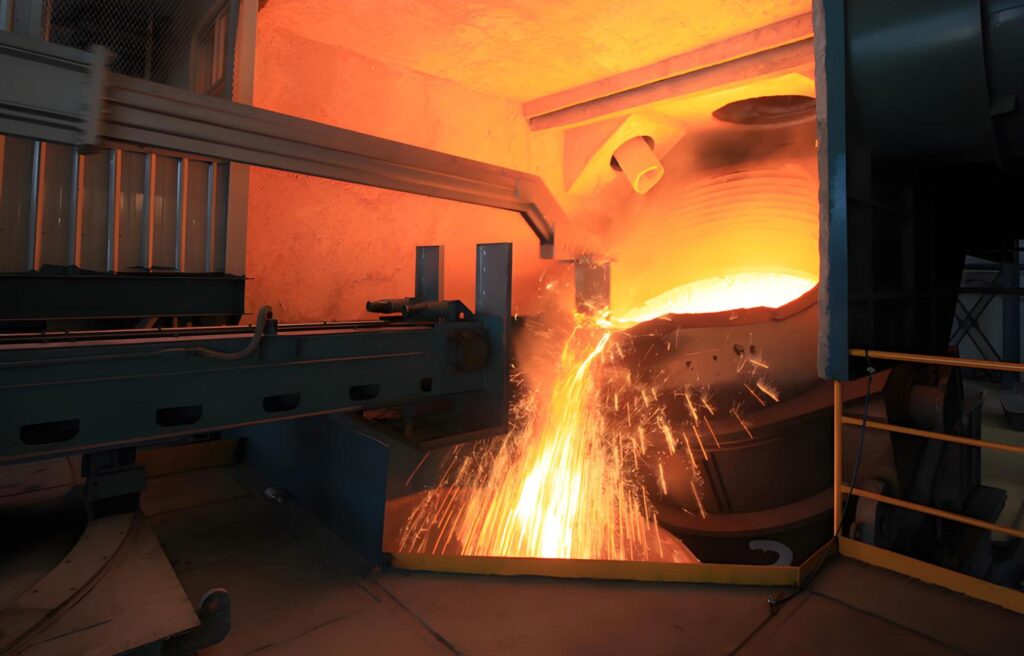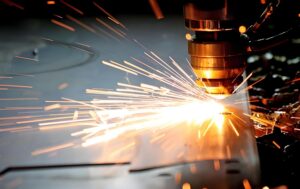Iron has shaped civilizations for thousands of years — from the tools of ancient blacksmiths to the massive structures and precision machinery of today’s industries. One property that defines how iron behaves in manufacturing and engineering is its melting point. Understanding this temperature threshold helps engineers, metallurgists, and manufacturers make informed decisions in design, production, and material selection.
In this article, readers will discover what the melting point of iron is, why it matters in different industries, how it changes depending on iron’s type, and the factors that can influence it. The discussion will also explore iron’s thermal properties and the many applications that rely on its ability to withstand high heat — insights especially relevant for those involved in precision machining and industrial metal fabrication.
What is the Melting Point of Iron
The melting point of iron refers to the temperature at which solid iron transitions into its liquid state. For pure iron, this occurs at approximately 1,538°C (2,800°F). This high threshold is one reason iron is considered a dependable material in high-temperature applications — from foundry casting to heavy machinery manufacturing.
From a metallurgical perspective, melting point is not just a number on a chart — it’s a benchmark for how the metal behaves during processing. In smelting or casting, knowing the exact temperature helps control furnace settings and achieve optimal molten consistency, which is vital for machining parts that demand high structural integrity.
Interestingly, iron does not melt abruptly like ice into water. As it approaches its melting point, it undergoes allotropic transformations, where its crystal structure changes form before becoming liquid. These shifts — from ferrite to austenite to delta iron — influence its mechanical properties and heat treatment behavior.
Why is the Melting Point of Iron Important?
The melting point of iron plays a critical role in modern manufacturing and engineering. It impacts everything from tool steel production to the reliability of high-heat industrial components.
Manufacturing and Fabrication
In industries such as welding, CNC machining, and foundry operations, precise temperature control ensures the correct shaping, joining, or casting of iron-based components. Overheating risks grain structure damage, while insufficient heat can lead to incomplete fusion.
Material Selection
Engineers select materials partly based on their operating temperature range. Iron’s high melting point makes it ideal for boilers, engine components, and power plant equipment where intense heat is common.
Product Longevity
By understanding melting point and thermal properties, designers can ensure that iron-based parts remain durable and safe throughout their service life.
Safety Considerations
Critical infrastructure — such as bridges, industrial furnaces, and transport systems — must operate well below the melting point of their materials to avoid catastrophic failure.
Types of Iron and Their Melting Point
The melting point varies depending on the form of iron and its alloy content:
Pure Iron
- Melting Point: ~1,538°C (2,800°F)
- High purity, excellent ductility, and strong resistance to deformation at high heat. Used in specialized industrial applications.
Cast Iron
- Melting Point: 1,150°C to 1,200°C (2,102°F to 2,192°F)
- High carbon content lowers melting point, making casting easier. Popular for machinery bases, piping, and cookware.
Wrought Iron
- Melting Point: ~1,500°C (2,732°F)
- Low carbon content; historically used in decorative architecture and marine applications.
Steel (Iron-Carbon Alloy)
- Melting Point: 1,370°C to 1,510°C (2,498°F to 2,750°F)
- Widely used in construction, tooling, and automotive manufacturing. Alloying elements adjust both strength and melting temperature.
Factors That Affect the Melting Point of Iron

While pure iron’s melting point is fixed, alloys and processing conditions can alter this value in practical applications. Understanding these factors is crucial for optimizing machining processes.
Impact of Alloying Elements
Elements like carbon, silicon, chromium, or nickel modify iron’s atomic structure, often lowering the melting point. For example, carbon in cast iron reduces the melting point, making it easier to cast. In contrast, certain high-performance alloys may have slightly higher melting points due to specific additives.
Role of Impurities
Impurities like sulfur or phosphorus can lower the melting point and affect material quality. Excessive impurities may weaken iron, making quality control during smelting essential. Refining processes help minimize these impurities to maintain desired properties.
Influence of Atmospheric Conditions
The melting environment impacts iron’s behavior. Oxygen can cause oxidation, forming iron oxides that alter melting characteristics. Inert atmospheres, such as argon or nitrogen, are used in controlled settings to ensure consistent melting and prevent defects.
Effect of Pressure on Melting
Though less relevant in standard machining, pressure can slightly increase iron’s melting point by compressing its atomic structure. This effect is minimal but may be considered in specialized applications like high-pressure casting.
Heating Rate and Process Control
The rate of heating affects how iron melts. Rapid heating can lead to uneven melting, while gradual heating ensures uniformity. Precision heating is critical in processes like investment casting, where consistent temperatures produce high-quality parts.
Thermal Properties of Iron and Their Industrial Applications
Iron’s thermal properties, including its melting point, thermal conductivity, and heat capacity, make it a versatile material across industries. This section explores how these properties drive its use in machining and beyond.
Thermal Conductivity for Heat Distribution
Iron’s moderate thermal conductivity allows it to transfer heat effectively without being as conductive as copper. This makes it ideal for applications like cookware, heat exchangers, or engine components, where controlled heat distribution is essential. Its high melting point ensures stability in these high-heat environments.
Heat Capacity for Thermal Stability
Iron’s heat capacity enables it to absorb significant heat before reaching its melting point. This property is valuable in applications requiring thermal stability, such as structural beams in buildings or boiler components in power plants, where temperature fluctuations are common.
Machining Applications of Iron’s Thermal Properties
In machining, iron’s thermal properties are critical for processes like casting, forging, and welding. Cast iron’s lower melting point facilitates intricate mold designs, while steel’s higher melting point suits high-strength applications like automotive parts. Precise temperature control ensures quality and efficiency.
Broader Industrial Applications
Iron’s thermal properties shine in industries beyond machining. In construction, steel’s high melting point ensures structural integrity in skyscrapers. In energy, iron alloys in turbines withstand extreme temperatures. In consumer goods, cast iron’s durability is prized in products like skillets.
Innovations Leveraging Iron’s Thermal Properties
Advancements like laser melting and additive manufacturing (3D printing) rely on iron’s thermal properties. Laser techniques enable precise melting for complex components, while 3D printing uses controlled melting to build layers of iron-based materials, reducing waste and enhancing design flexibility.
How to Leverage Iron’s Melting Point in Machining Projects
To maximize iron’s potential, machinists must consider its melting point in process design. Here are practical tips:
- Choose the Right Alloy: Select cast iron for casting or steel for high-strength applications based on melting point requirements.
- Optimize Furnace Settings: Calibrate furnaces to exceed the melting point for casting or stay below it for forging.
- Use Inert Atmospheres: Prevent oxidation by melting iron in argon or nitrogen environments.
- Monitor Impurities: Ensure high-quality raw materials to maintain consistent melting behavior.
- Invest in Advanced Tools: Use pyrometers or thermocouples for precise temperature control.
For further insights, explore our guide on alloy selection or learn about advanced casting techniques.
Conclusion: Harnessing Iron’s Melting Point with Precionn
The melting point of iron is a fundamental property that shapes its role in modern manufacturing. From selecting the right alloy to optimizing machining processes, understanding this property ensures precision, safety, and efficiency. Whether you’re casting intricate parts or forging durable components, iron’s thermal properties are key to success.
At Precionn, we specialize in leveraging the properties of iron and its alloys to deliver high-quality machined components to international clients. Our expertise in metallurgy and state-of-the-art facilities ensure that every project meets the highest standards. Visit our website at precionn.com to discover how we can support your machining needs with precision and innovation.




